Last Updated on December 17, 2023 by Amanda P. Brown
Explore a sweet adventure into the world of Rasgulla, a beloved Indian dessert deeply rooted in Bengal’s culinary tradition.
From the classic Bengali Rasgulla to colorful variations like Pink and Chili Rasgulla, each type adds excitement to the dessert scene.
Explore the cultural aspects, flavors, and textures of this spongy treat. Learn about its unique Geographical Indication, its role in festivals, and creative recipes in this post.
Join me to unravel the charm of Rasgulla, a symbol of celebration and hospitality, and discover the joy in its diverse forms.
What is Rasgulla/Rosogolla?
Table of Contents
Whether you call it rasgulla or rosogolla/রসগোল্লা, both names reflect a wonderful, sweet delicacy of Bengali cuisine. This delicious Bengali delicacy is well-known for its spongy structure and delicate taste. It comprises chhena (Indian cottage cheese) balls simmered in sugar syrup.
Indian cuisine accepts these soft, juicy sweets as rasgulla in their different regions. But Bengali honor it by Banglar Rosogolla. This iconic dessert has earned the Geographical Indication’ Banglar Rosogolla’. Thus, this tag ensures West Bengal’s association with this beloved culinary delight.
What is Rasgulla Made of?
Rasgulla making is mainly done with chhena (Indian cottage cheese) and sweet sugar syrup. The chhena is kneaded into small balls and boiled in sugar syrup. To enhance taste, you can infuse it with cardamom or saffron. And then allow it to expand. Thus, you will get a fruitful result in its characteristic spongy texture.
While regional variations exist, the fundamental ingredients include chhena and sugar syrup. Different regions may introduce unique twists. They can include variations in the chhena mixture or the addition of distinct flavors like rose or saffron. However, whatever attire it wears in individual cuisine, rasgulla can make your mood festive.
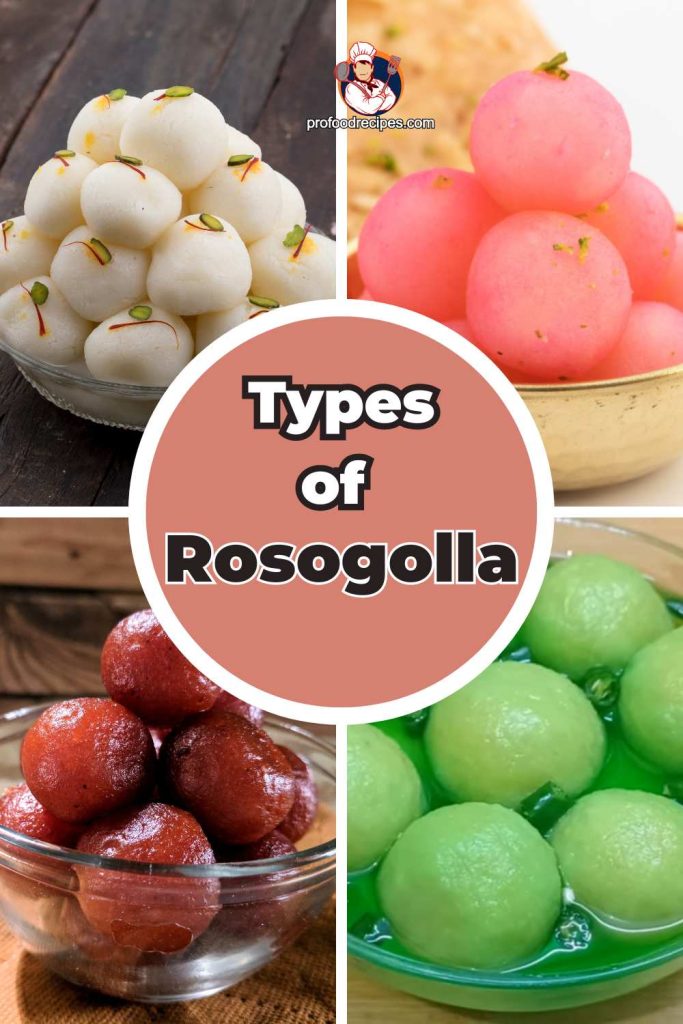
11 Types of Rasgulla/ Rosogolla
In the rich tapestry of Bengali- Indian sweets, Rasgulla stands out as a cherished delicacy. These soft, spongy treats are a symbol of celebration and hospitality.
From the classic Bengali Rasgulla to innovative variations like Pink Rasgulla and Chili Rasgulla, each type offers a unique twist. They add vibrancy to the desert landscape.
The calorie content varies, but moderation ensures delightful indulgence. Let’s learn 11 amazing Types of rasgulla with a brief description.
1. Bengali Rasgulla (Banglar Rasogoll)
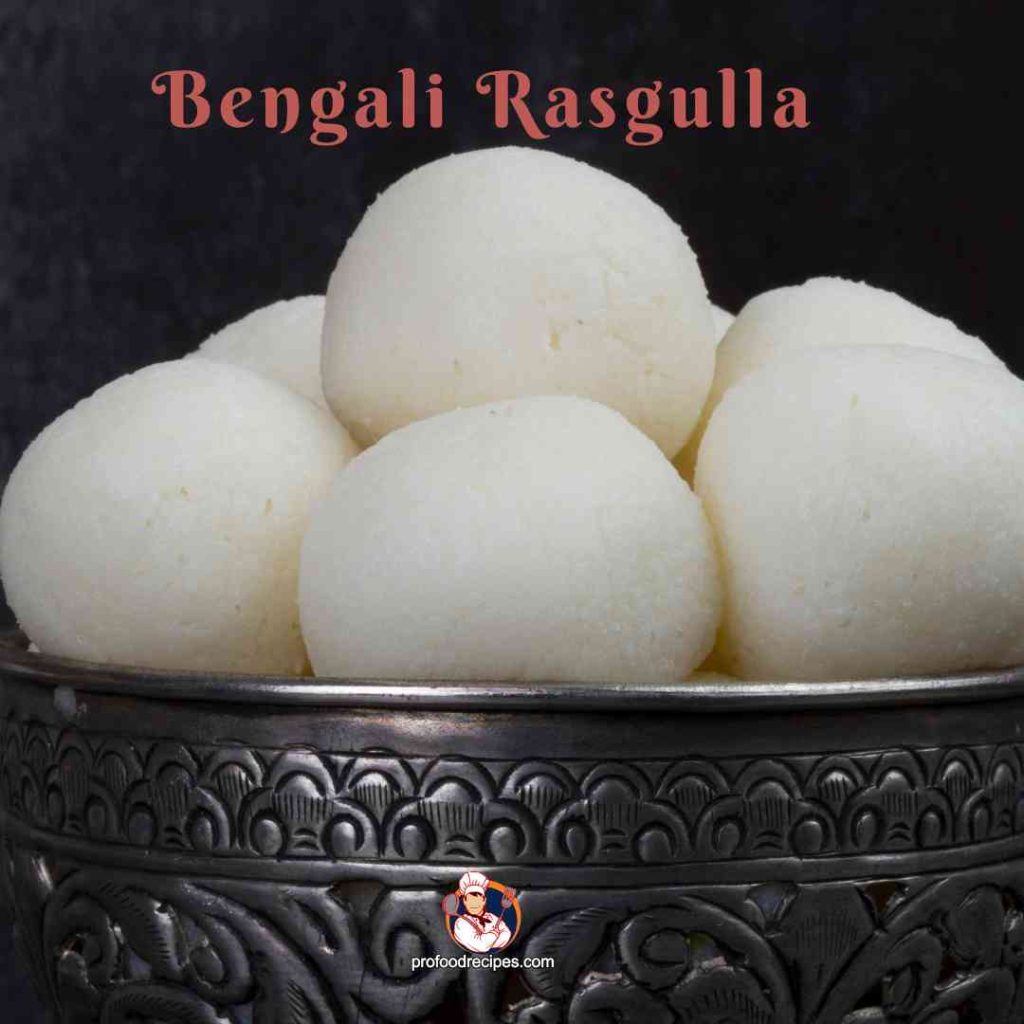
Bengali Rasgulla is made by curdling milk, which is known as chenna. Fresh chenna balls are dipped into a sugar solution and turn into spongy white rasgullas.
However, traditionally, the chhena comes from curdled full-fat milk. Then, it is kneaded and shaped into small balls. At last, they are cooked into sugar syrup. To enhance the fragrance, you can add cardamom to the syrup.
Bengali Rasgulla is often served chilled. For garnish, you can use some pistachios.
Nutrition Fact
- 1 medium piece = 150 calories
2. Pahala Rasgulla
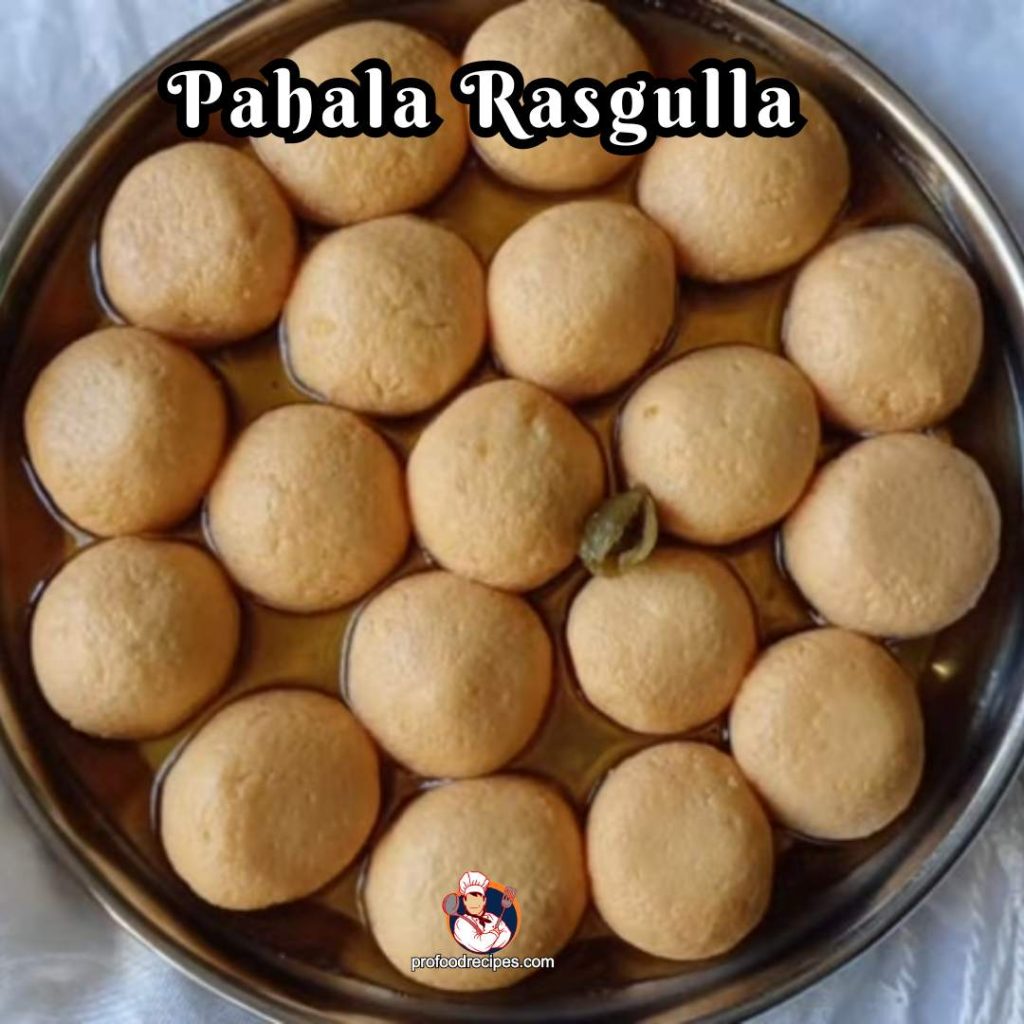
Pahala Rasgulla is a special treat from Odisha. It boasts a unique cooking process. Therefore, they differ slightly from Bengali rasgullas by the rasgulla texture and taste.
They use sooji with chenna to make a softer, juicier, and non-chewy rasgulla. They take 25 gm sooji (semolina) to incorporate with 1 kg chenna. Then, these sweet rasgullas are carefully cooked in sweet syrup until they turn reddish.
However, this Pahala Rasgulla is an iconic sweet dish in Odisha, particularly during festivals and other special events.
Nutrition Fact
- 1 piece = 150 calories
3. Kheer Mohan
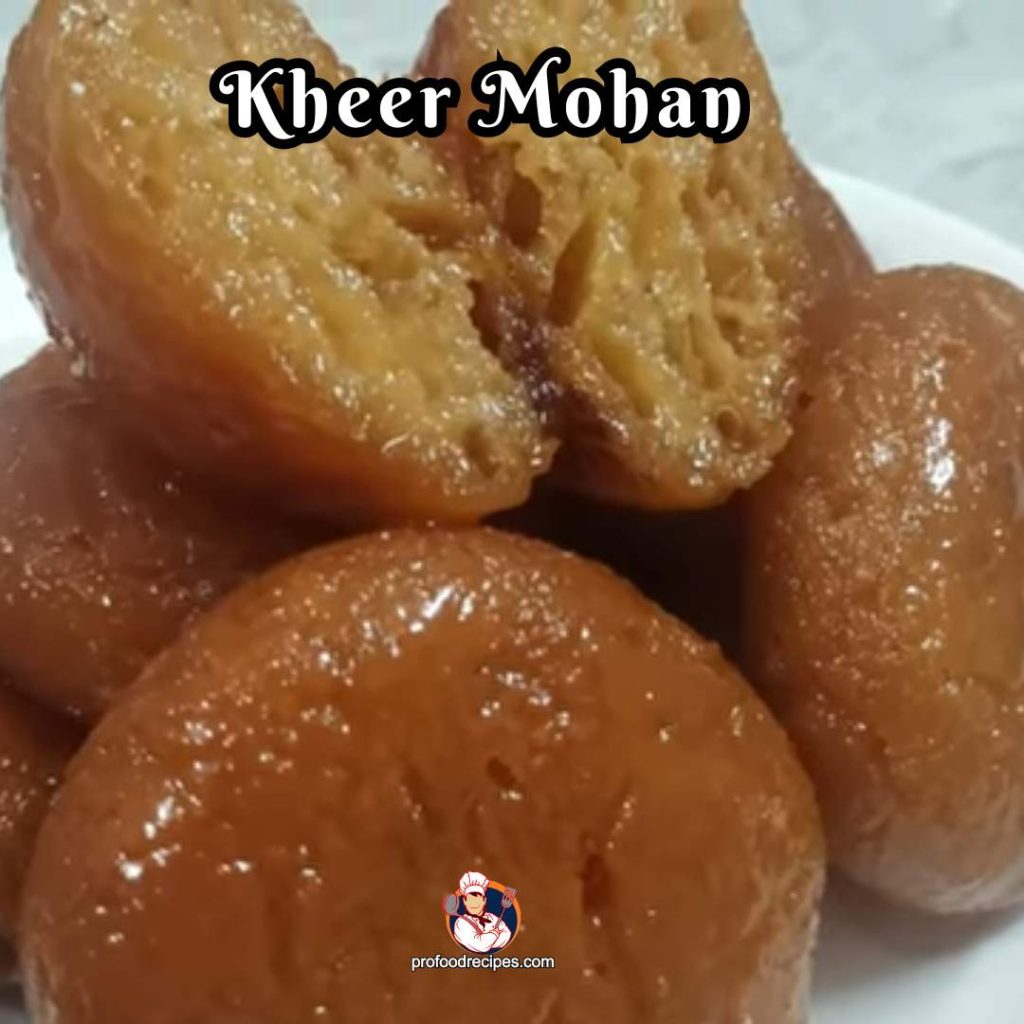
Kheer Mohan is a tasty sweet from Odisha. It is one of the popular variations of Rasgulla. Both use chhena (cottage cheese). But Kheer Mohan’s chenna patties are dipped into sweet, thickened milk, not in a sugar syrup. That’s why it has a richer flavor than regular rasgulla.
However, It is often shaped like a lemon. The aromatic essence of cardamom enhances its fragrance and richness. Due to its decadent and rich flavor, it is popularly consumed in Odisha at festivals and special occasions
Nutrition Fact
- 1 piece = 200 calories
4. Angoori Rasgulla
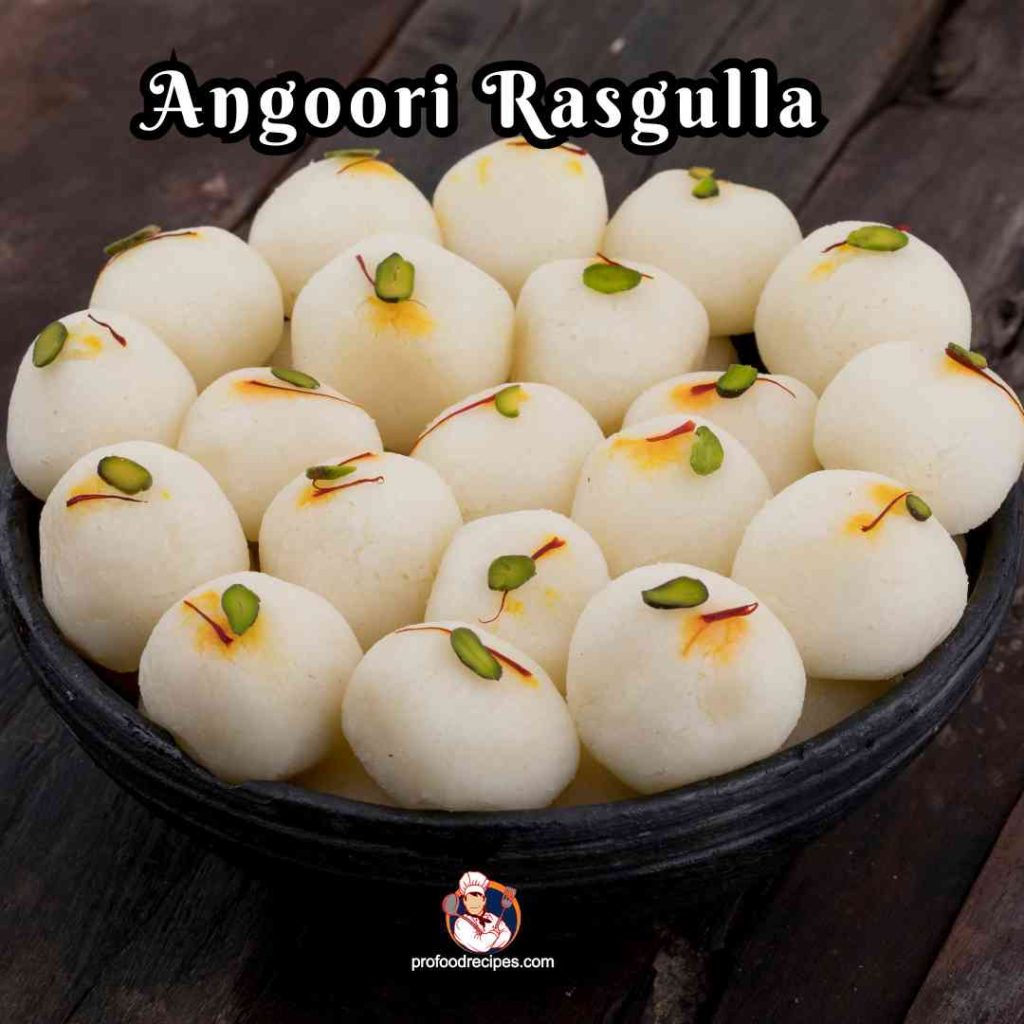
Angoori Rasgulla refers to a mini variation of the classic Rasgulla. It resembles tiny grapes or “angoors” (Hindi for grapes). That’s why it’s named Angoori Rasgulla.
However, it is made from chhena (cottage cheese). You can prepare the chhena curdling milk and separate the whey. Then, just knead the chhena until it becomes smooth. Next, you need to make them small, grape-sized balls. Then, just pour them into sugar water and boil until they become spongy and juicy.
Thus, your spongy tiny Anguri rasgullas are ready to enjoy. They offer a sweet and spongy treat with a smaller, more convenient size.
Nutrition Fact
- 1 piece = 50 calories
5. Pink Rasgulla
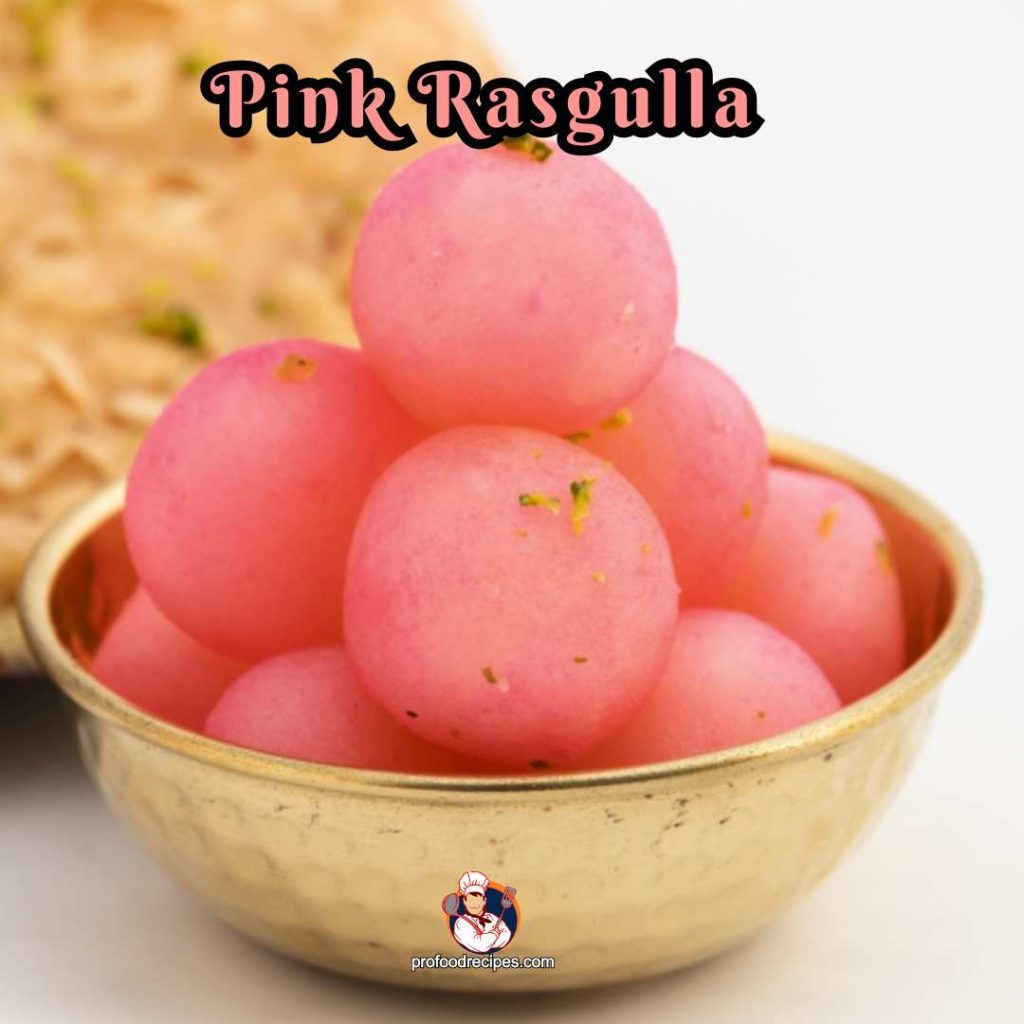
Pink Rasgulla is a colorful twist on the traditional Rasgulla. The chhena/cottage cheese balls have a shade of pink. You can get pink by including a natural coloring element in the chhena mixture, such as rose syrup or rose water.
Then, this Indian Rasgulla is boiled and steeped in sugar syrup like regular rasgullas. Thus, you get an eye-catching and delicately flavored sweet delight. They are popular at festive occasions and celebrations. It adds a vivid touch to the dessert table.
Nutrition Fact
- 1 piece = 150 calories
6. Rajbhog
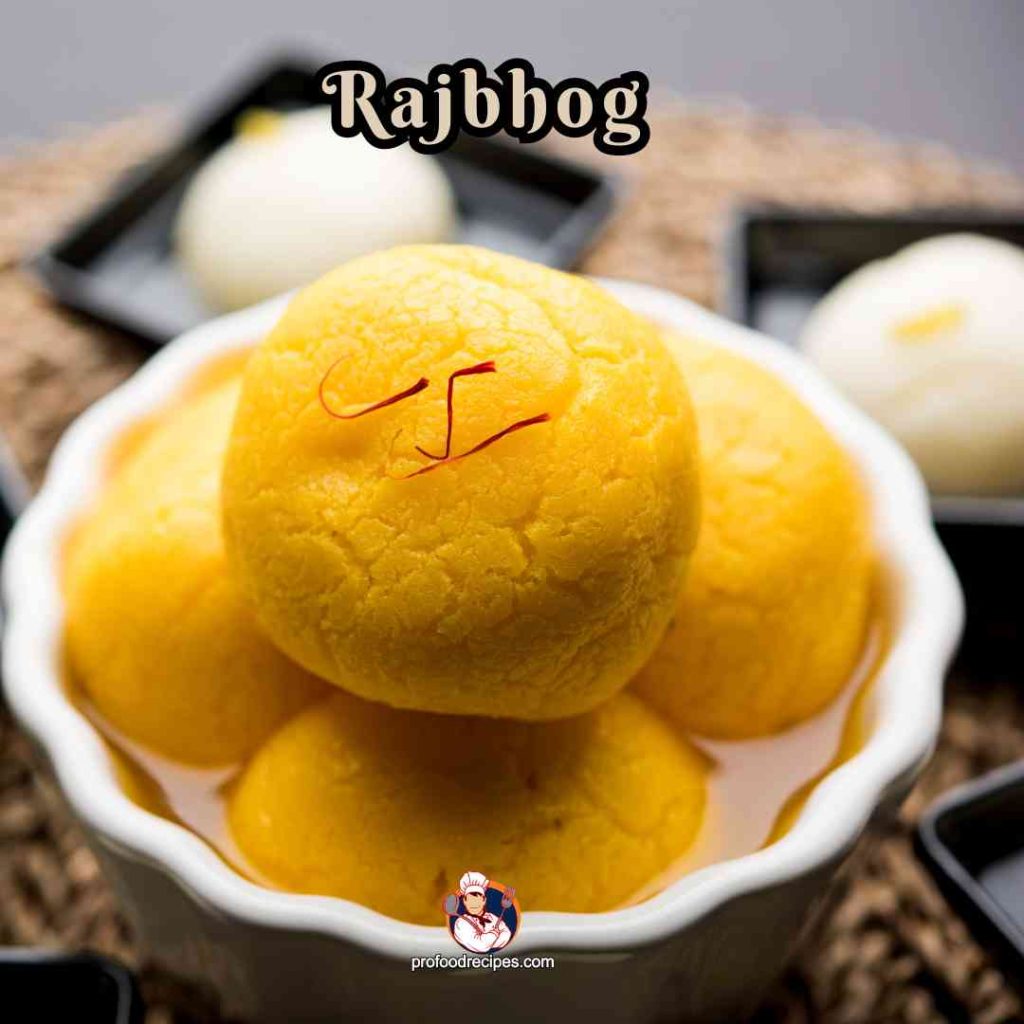
Rajbhog is one of the grand Bengali sweets. They are larger compared to Rasgulla. These cottage cheese balls of chhena are stuffed with a decadent mixture of khoya. Moreover, it includes aromatic cardamom, saffron, and sometimes nutmeg.
However, traditionally, these rasgullas are colored like yellow, orange, or saffron. This sets their appearance and makes it a perfect festive dessert.
Nutrition Fact
- 1 piece = 250-300 calories
7. Black Rasgulla
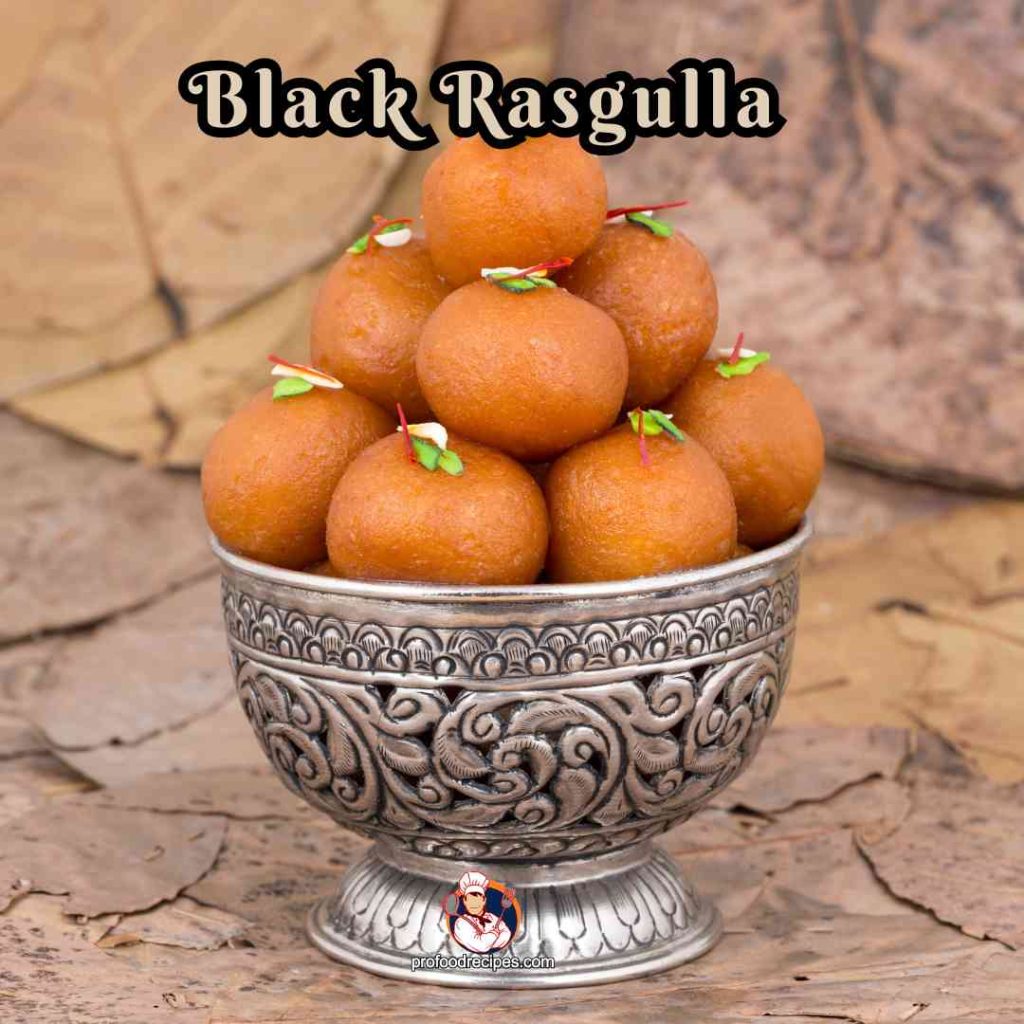
Black Rasgulla is a cool and modern version of regular Rasgullas. The traditional spongy cottage cheese balls comprise a rich and deep color in this unique recipe.
They often come from ingredients like chocolate, cocoa powder, or jaggery into the chhena (cottage cheese) mixture.
The preparation includes the usual steps of making Rasgulla. The fresh chhena is shaped into small balls. Then, it is cooked and soaked in sugar syrup. While you boil the syrup, add the color ingredients. Thus, you will get these visually appealing desserts with the same traditional flavor.
Nutrition Fact
- 1 piece = 150 calories
8. Komola Bhog
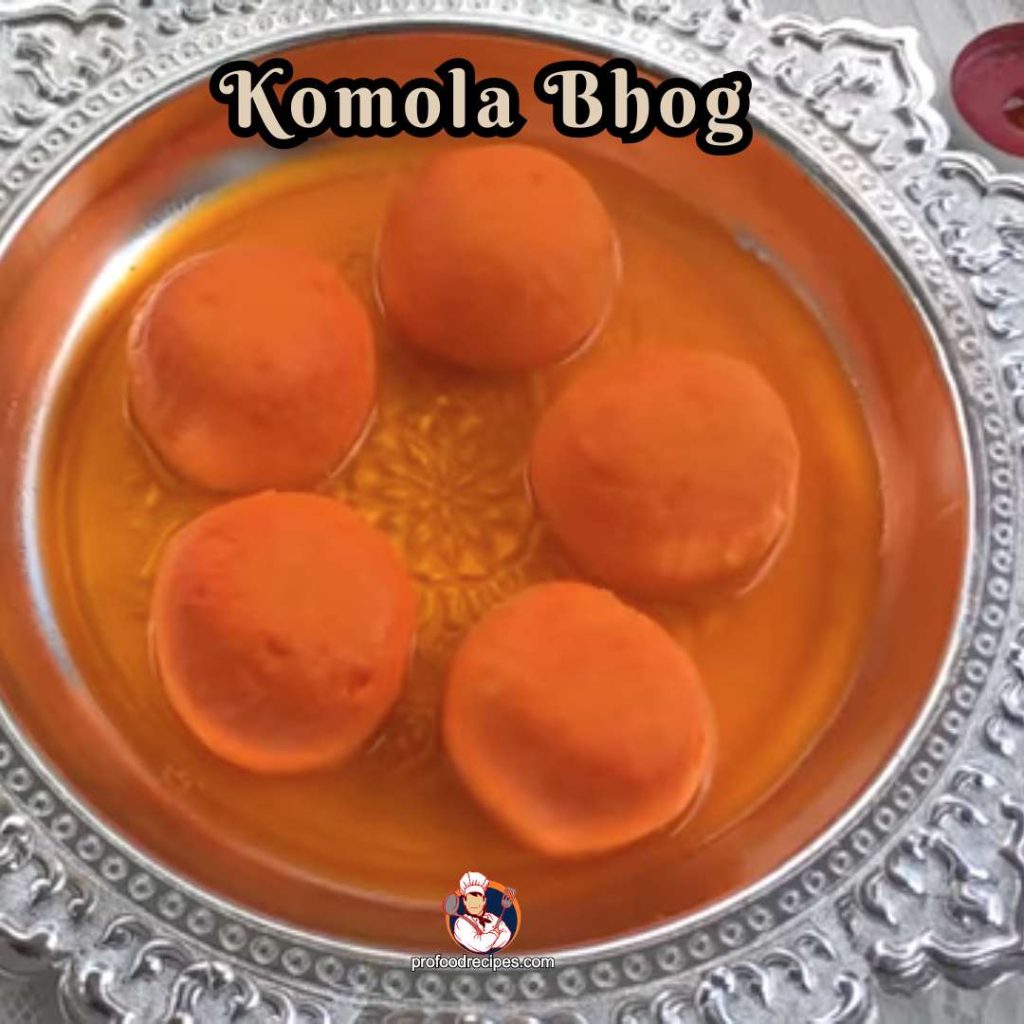
Komola Bhog is a unique Bengali sweet. It resembles mini oranges with a citrusy kick. They are made from smooth, velvety chenna and fresh khoya mixture with freshly squeezed orange juice.
To make komola bhog, prepare your chenna from curdling milk and khoya from evaporated milk solids. Then, make balls of their mixture. Next, boil them in a sugar solution with some orange essence. To garnish, you can go with some chopped nuts. However, thus your orangy Komola Bhog is ready to enjoy.
This eye-catching, bright dessert will add a cool twist to conventional sweets. So, for your next gathering, you can include it in the dessert menu.
Nutrition Fact
- 1 piece = 150 calories
9. Mango Rasgullas
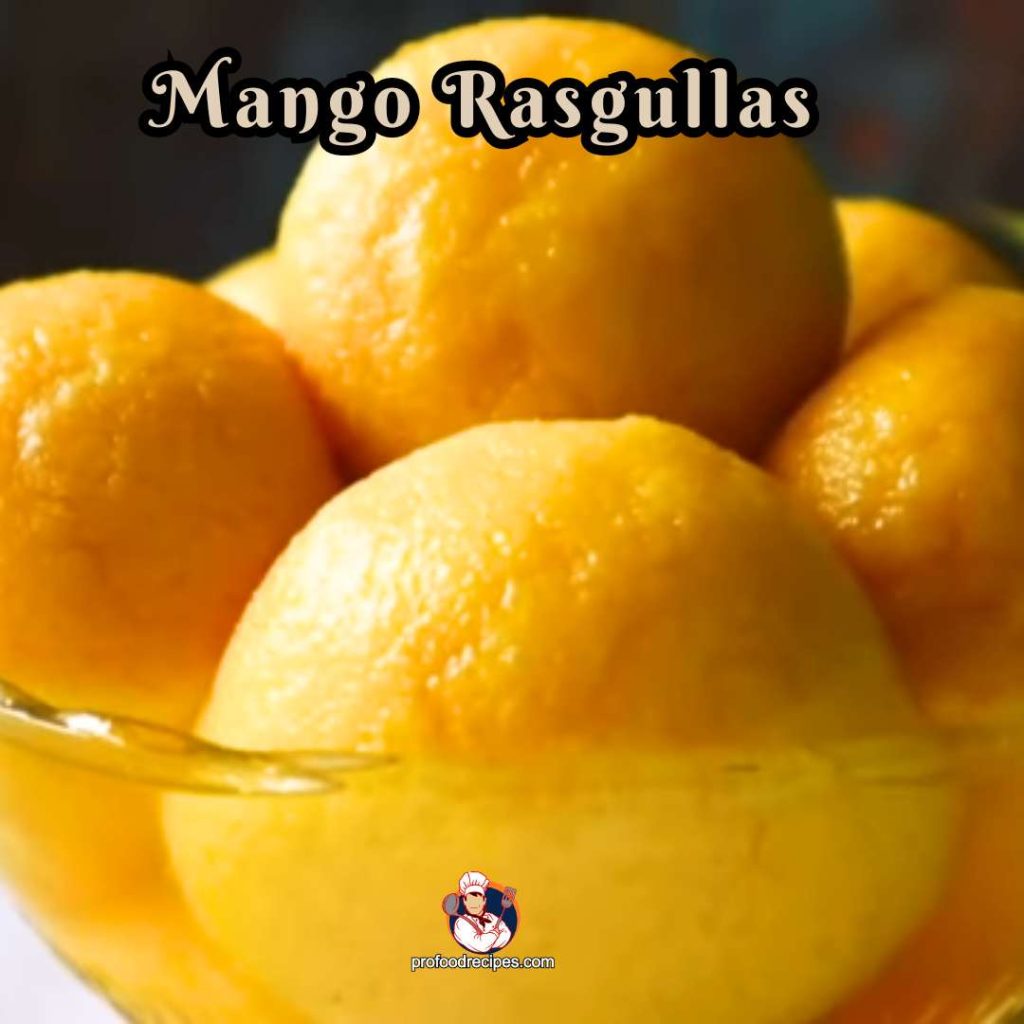
Mango Rasgullas are a fruity twist on regular Rasgullas. This sweet treat combines cottage cheese’s rich, creamy texture with ripe mangoes’ tropical and sweet essence.
This version adds mango puree or essence to the cottage cheese mixture. The cheese balls are then cooked and soaked in mango-infused sugar syrup. Thus, it results in a sweet and mango-flavored treat.
This mango rasgulla is a delightful twist on the traditional recipe. Moreover, it is perfect for enjoying during the mango season.
Nutrition Fact
- 1 piece = 150 calories
10. Chili Rasgulla
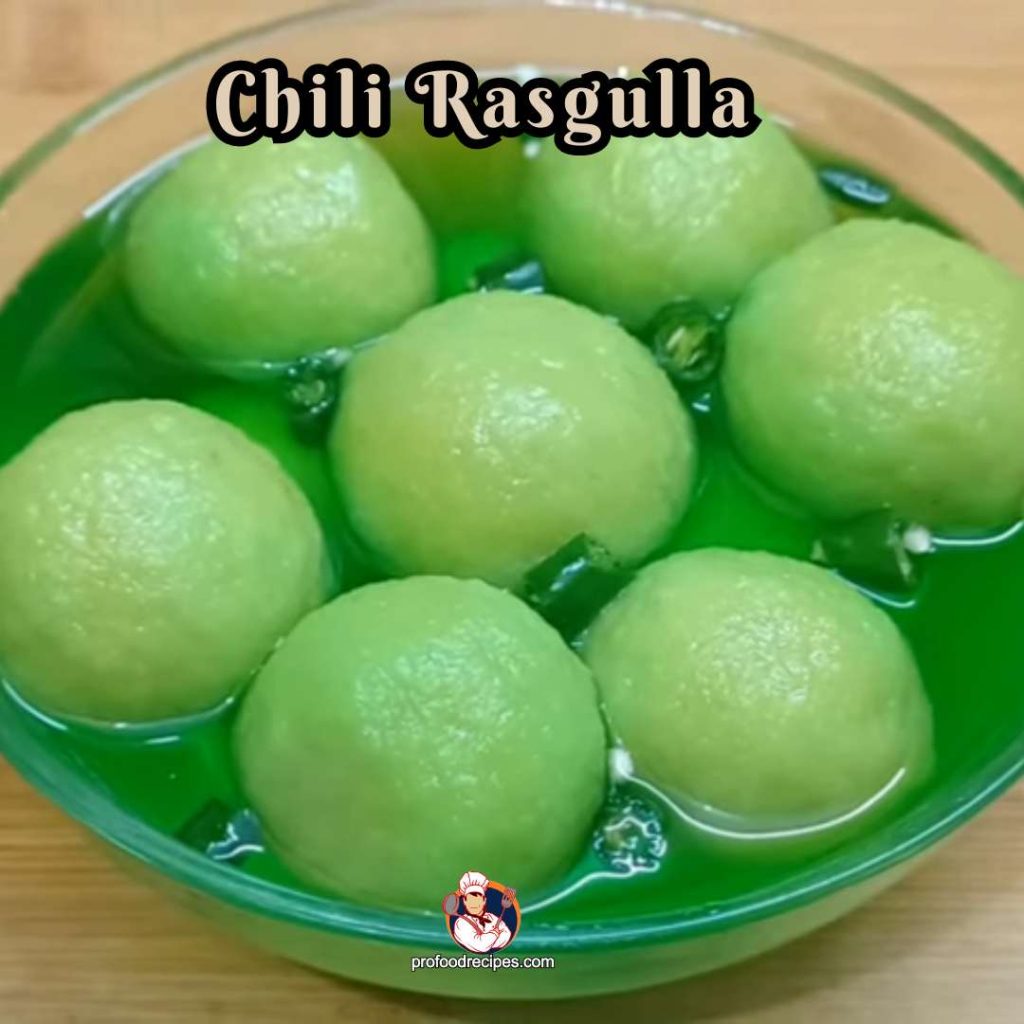
Chili Rasgulla is a creative and spicy twist on the traditional Bengali sweet Rasgulla. This unique version infuses the classic spongy cottage cheese balls with a spicy and tangy chili flavor. This dessert offers a fusion of sweetness and heat.
You need to make your chenna mixture with some chili powder. This will add a spicy, strong flavor to your rasgulla. After combining, make tiny balls and soak them in chili-mixed sugar syrup. 2- 4 drops of green food color can enhance the dish’s appearance. Then, you can serve them chilled and enjoy.
Nutrition Fact
- 1 piece = 150 calories
11. Baked Rosogolla
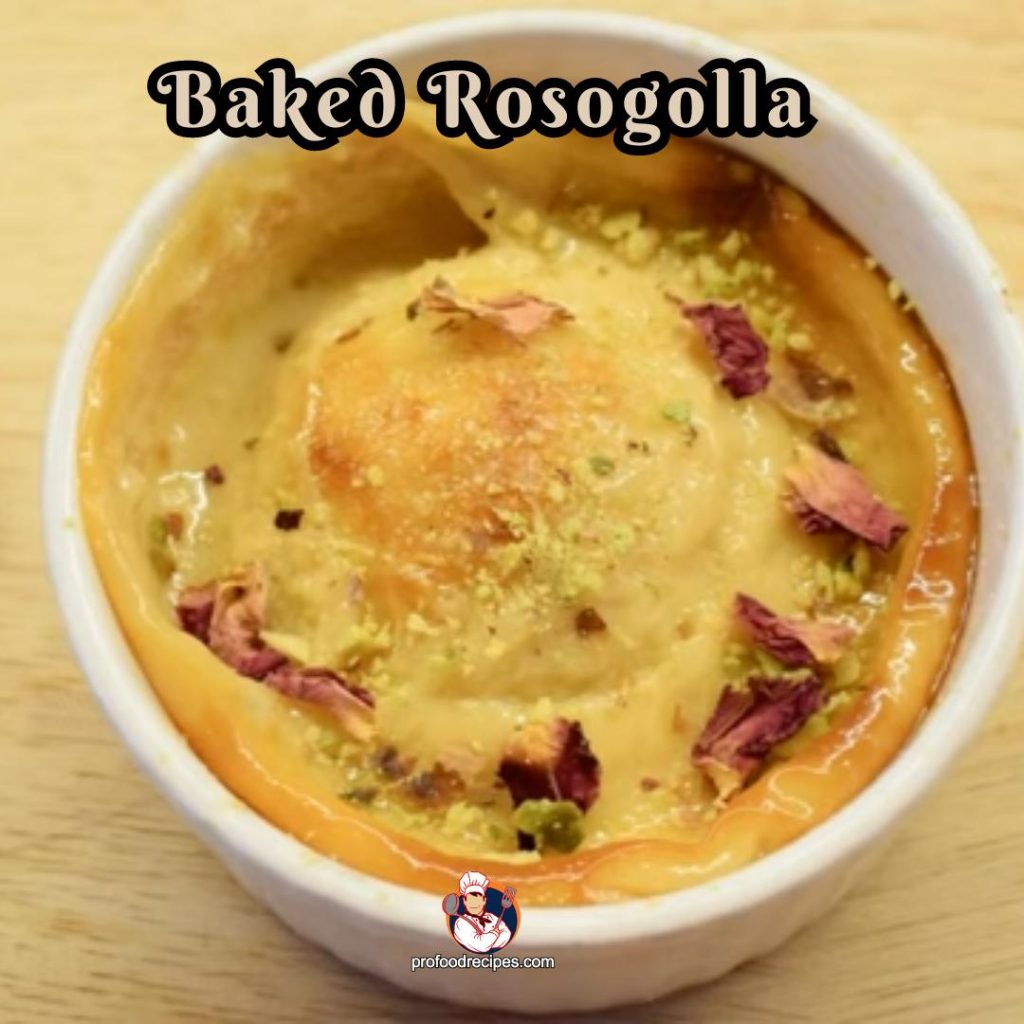
Another unique and beloved recipe of rasgulla is Baked rosogolla. It is a unique take on the conventional Bengali sweet and regular Indian sweet rasgulla recipe.
This unique dessert includes cottage cheese from curdled milk, semolina, all-purpose flour, and a hint of baking soda for added fluffiness. You need to mix the ingredients and then make balls of the mixture. Soak them in a fragranced sugar solution.
Now, it’s time to bake. Before baking, you need to grease your prepared Rosogolla with butter or ghee. Then, you can top it with some chopped nuts. This will add an extra layer of richness.
However, you need to set it in the oven for 15 to 20 minutes next. And your Baked rosogolla is ready.
Nutrition Fact
- 1 piece = 150 calories
Read More: Different Types of Laddu
How to Make Kolkata Rasgulla?
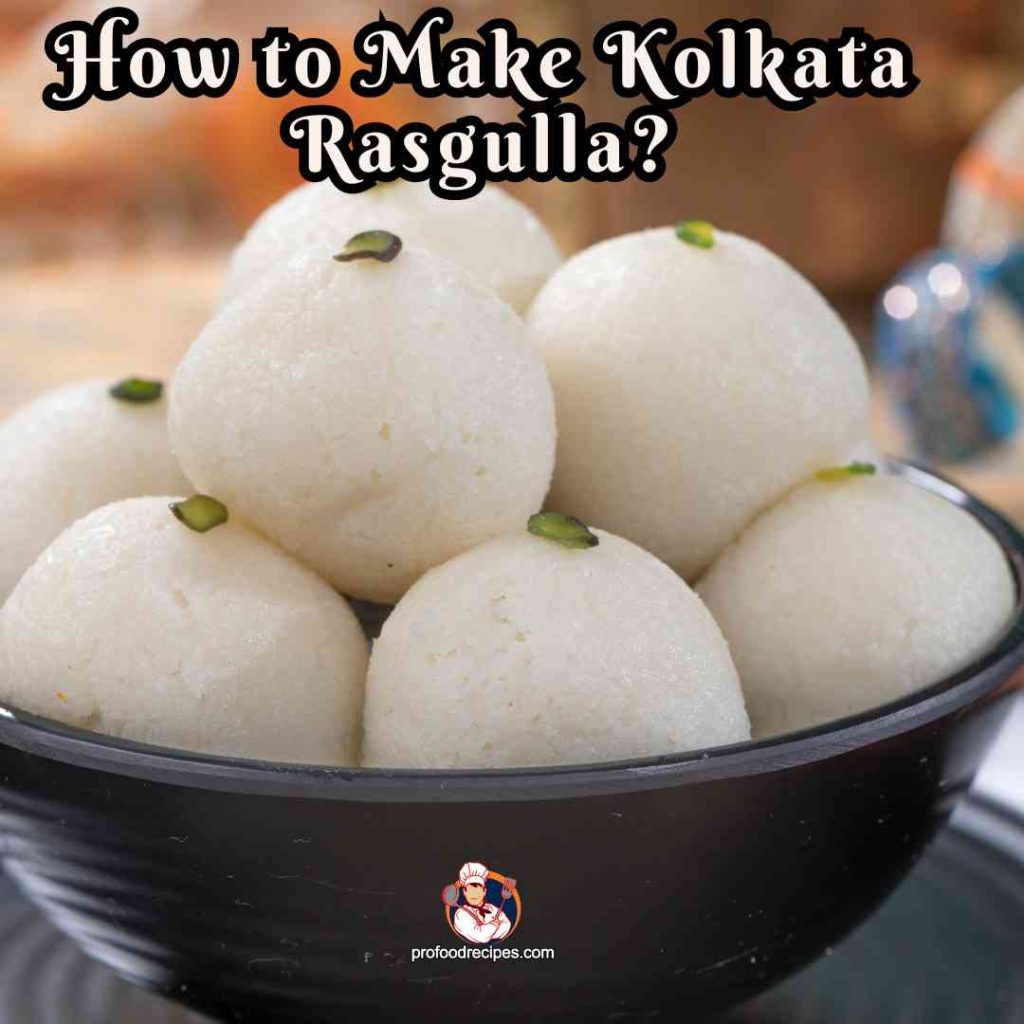
Whenever the name of rosogolla arises, it mainly represents the Bengali cuisine style rosogolla or rasgulla. There, you may find different types of rosogolla and cuisine styles. One of the mentionable easy rasgulla recipes is Kolkata’s rosogolla. So, let’s discover How to make Kolkata rasgulla.
Ingredients of Rasgulla
- 1 lit Milk/ 200 gm Cottage cheese/Chhena
- 2 cups Sugar
- 1 teaspoon Refined Flour
- 1 lemon (to make cottage cheese)
- 1-2 Cardamom
- 1 cup Water
Cooking Process
- Take 1 liter of milk and bring it to a boil.
- Squeeze the juice of 1 lemon or add 1 tbsp of vinegar to curdle the milk.
- When the milk curdles, turn off the flame.
- When the milk curdles, turn off the flame.
- Rinse the cottage cheese with cool water and let it sit for 10 minutes.
- Rinse the cottage cheese in a cotton cloth, knead it, and hang it for a few minutes. The time will differ depending on the density of the cheese.
- Smear 1 tsp refined flour on a plate/wooden board. Then, start kneading the cheese for five minutes.
- Make tiny balls out of the dough. Keep them aside.
- Now mix 1 cup of water and 2 sugar cups and prepare sugar syrup. Then, boil the syrup with 2 cardamoms.
- Place all of the cottage cheese balls in the sugar syrup. Then, cover and cook for 4-5 minutes above medium-high heat.
- Cook for another 10 minutes. Continue until the Rasgullas are doubled in size. Take them away from the pan.
- Place the Rasgullas in a container and set aside to cool.
- Now serve this authentic Kolkata Rasgulla as a delightful dessert.
Read More: Homemade Blueberry Pudding Recipes
What Are the Benefits of Eating Rasgulla?
Rasgulla, a famous Indian dish prepared with chhena (cottage cheese) and steeped in syrupy syrup, has a number of health benefits:
- Rasgulla is high in calcium and protein, which are necessary for healthy bones, teeth, and tissue healing.
- Chhena in Rasgulla comprises antioxidants such as selenium, which protects cells.
- The probiotics in chhena help to promote gut health. And assist in digestion and nutrient absorption.
- Rasgulla has a low fat and cholesterol content. So, you can consider it as a healthier dessert option.
- Rasgulla’s sugar syrup delivers a rapid dose of glucose. Thus, you can get instant energy.
- The sugar content can cause serotonin release. It encourages a good mood and decreases depression.
FAQs
Does Rasgulla Expire?
Yes, rasgullas, like many Indian sweets, have a limited shelf life. They are best when consumed fresh. If kept cool in the refrigerator, rasgullas can generally be fine for about 4 days. However, it’s crucial to note that the quality and freshness of sweets might vary, so it’s always a good idea to observe for any symptoms of decay before eating them.
Gulab Jamun Vs Rasgulla- Which is Sweeter?
Generally, gulab jamun is seen as sweeter than rasgulla. Gulab jamun is a densely fried ball dipped in sugar syrup with a greater sweetness. Rasgulla is lighter, softer, and has a gentler sweetness from its syrup, not as strong as gulab jamun’s sweetness.
Why My Rasgulla is Not Spongy?
If your rasgullas are turning out not-so-spongy, check your chhena quality—it should be soft, not dry. Knead the dough well for a smooth texture. Shape balls evenly; don’t make them too tight.
Avoid overcooking; simmer once boiling. Sugar syrup consistency matters; medium thickness is good. Give them space in the pan.
How to Make a Rasmalai From Rasgulla?
To make rasmalai from rasgullas, follow the below tips:
1. Gently squeeze the sweet syrup from the rasgullas.
2. Make a milky mix with saffron, cardamom, and sugar.
3. Soak the rasgullas in this mix and chill.
4. Serve the softened rasgullas topped with chopped nuts.
Final Verdict
Rosogolla is more than just a sweet; it’s a trip through the diverse world of Indian desserts. From the classic Bengali Rasgulla to new variations, each type has its unique flavor.
Whether enjoying the traditional treat or trying modern twists, the joy of Rasgulla goes beyond taste. It represents celebration and hospitality. So, join the sweet journey, explore, and savor the delightful world of Rasgulla. This treat captures the essence of Indian culinary heritage.
You May Also Like to Read:
- Rajasthani Sweets Name
- Gluten Free Desserts Recipes
- Traditional Mexican Christmas Desserts
- Best Churro Pancakes Recipes
- What Dessert Goes Well After Pizza?

